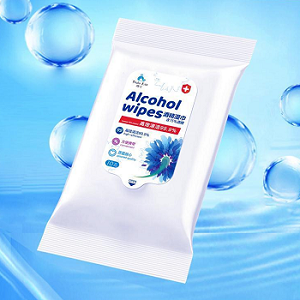1. Classification of wet wipes
According to the GB/T 27728-2011 "Wet Wipes" standard, wet wipes are divided into two categories: wet wipes for human body and wet wipes for objects, and wet wipes for human body include ordinary wipes and disinfectant wipes. Disinfectant wipes are generally composed of two parts: substrate and chemical solution, the substrate is generally non-woven fabric or wet strength paper, most of the disinfectant wipes on the market are non-woven fabrics, and non-woven fabrics are mainly spunlace non-woven fabrics; Disinfectant solution is considered to be the most technically intensive place for disinfectant wipes products, the effect is different, the formula of the drug solution is also inconsistent, the general composition of the liquid is solvents, moisturizers, preservatives and flavors and other auxiliary materials. Solvents are generally water and alcohol solutions.

2. UN number of wet wipes:
UN number classified as disinfectant wipes:
UN3243 Solids containing toxic liquids, n.e.s.;
UN3175 Solids containing flammable liquids, n.e.c.s.
3. How to distinguish whether wet wipes are dangerous goods?
Disinfectant wipes contain only two parts from the physical composition, one is the solid form of the substrate, and the other part is the liquid form of the chemical solution. The substrate in solid form is generally non-dangerous goods, and the key to determining whether it is dangerous goods lies in the dangerous characteristics of the chemical solution.
Therefore, to determine whether the chemical solution is a flammable liquid, you can determine whether the disinfectant wipes are dangerous goods.
A.
The following are the flash point references for dangerous goods:
If the flash point of the closed cup is < 23 °C, it belongs to Class II flammable liquid.
The flash point of the closed cup is ≥ 23 °C and the ≤35 °C is a class III flammable liquid;
The flash point of the closed cup > 35 °C and ≤ 60 °C, and it can be continuously burned and is also a Class III flammable liquid
B.
However, not every disinfectant wipe with a closed cup flash point falling within the above dangerous goods range is considered dangerous goods!
According to Special Provision 216 in UN 3175:
If the substance is not visibly free liquid when the components of loading, packaging or transport of goods are closed; Mixtures of solids and flammable liquids not applicable to the provisions of these Rules may be transported under this entry without first applying the classification criteria of class 4.1. When used as a bulk container, each cargo transport component must be leak-proof. The provisions of the above rules do not apply to sealed packages or articles containing less than 10 mL of flammable liquids of packing class II or III absorbed by solid materials if there is no free liquid in the package or article.
C.
Packages that meet the requirements for limited and exceptional quantities are also exempt and do not need to be transported as dangerous goods:
1. A single inner package does not exceed 1kg, and the transport package does not exceed 30kg, which can be transported according to a limited quantity.
2. The inner packaging does not exceed 30g, and the transportation package does not exceed 300g, which can be transported according to the exceptional quantity.

